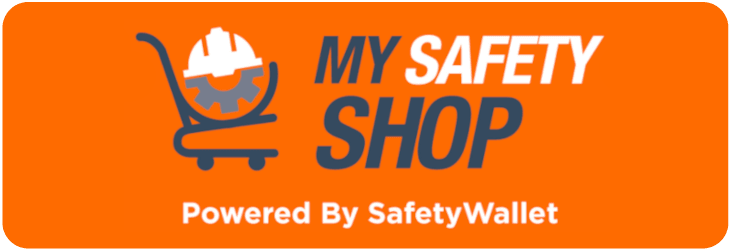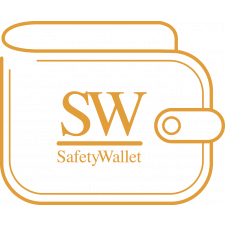Health and Safety Risk Assessment Procedure
Overview
Risk assessments are not a new concept, despite the organisation’s industry, sector, or nature of business. When they are conducted effectively, they serve as a crucial management tool to ensure that employees, and others, are safeguarded.
Employers are legally required to ensure that employees are provided with a healthy and safe work environment, and one of the ways to do this is by conducting an effective health and safety risk assessment.
The health and safety risk assessment procedure is one that is easy to follow with a few basic steps. Following these steps can help employers provide a healthy and safe work environment and ensure that they comply with the Occupational Health and Safety Act 85 of 1993.
What is a Risk Assessment?
A risk assessment can simply be defined as a systematic process which involves the identification of hazards, evaluation of associated risks in each workplace, and the implementation of reasonable control measures that will remove or reduce them.
When employers complete a risk assessment, it is important to define some keywords:
- An accident – which is an unplanned event that may result in loss.
- A hazard – which is anything that has the potential to cause harm.
- A risk – which is the likelihood and the severity of an injury, incident, accident, damage, or loss resulting from a hazard.
Types of Risk Assessment
There are several types of risk assessments and those required in a workplace must be proportionate as well as relevant to the operations and activities being carried out. In numerous industries, there are also specific legislative requirements that must be considered.
Some of the common types of risk assessments include:
- Fire risk assessments
- Manual handling risk assessments
- Display screen equipment (DSE) risk assessments
- Health surveys
- Control of hazardous substances risk assessments, and more.
Depending on the nature of the operations, organisations may also opt to complete a Risk Assessment Method Statement, which is a process that details hazards and a step-by-step procedure on how work must be completed, with suitable control measures in place to control risks that are identified.
Importance of Risk Assessments
When risk assessments are effectively completed, they are a crucial management tool in effective risk management. Risk assessments are straightforward in ensuring that risks to the health, safety, and wellbeing of employees, and others, are eliminated, reduced, or controlled.
Main purposes of the risk assessment process includes:
- Health and safety hazard identification and the evaluation of risks that are present in the workplace.
- Evaluation of the effectiveness and relevance of existing control measures that are in place.
- Ensuring that additional controls are implemented where there are significant risks.
- Prioritising of further resources to ensure the above.
Responsibilities
The employer is responsible to ensure that there is a healthy and safe workplace provided and thus, the risk assessment will fall to the employer. However, the employer can legally delegate this to a competent person who has the required knowledge, skill, experience, and training.
Once the workplace hazards have been identified, the associated risks can then be evaluated so that the necessary steps can be taken to minimise the effects. Next, employers must ensure that they communicate the risk assessment and the content to relevant and affected parties.
This can be achieved if the relevant and any affected parties are a part of the risk assessment team. The reason for this is that employees who work in the specific environment can provide details on associated hazards as well as risks, ensuring that they can more effectively be reduced or minimised.
When must a risk assessment be carried out?
A suitable as well as effective risk assessment must be completed before certain activities or tasks are carried out so that associated risks to health, safety, and wellbeing can be eliminated, reduced, or suitably controlled.
Once a risk assessment has been completed, it must be reviewed periodically or where the current risk assessment is no longer valid, or where there have been significant changes to the task, activity, or the work environment.
In addition, a risk assessment is needed after an incident, accident, or occupational illness ahs occurred to verify whether the control measures are still appropriate and whether the level of the evaluated risk is still the same, or whether it must be amended.
How is a risk assessment carried out?
Hazard Identification
Hazards can be identified through a variety of ways including, but not limited to:
- Observation
- Examining past incidents and accidents
- Examining MSDS, manufacturer’s manuals, information, guidance, and other sources.
- Consult with employees.
Identify who may be harmed and how
The next step involves identifying the groups of employees who may be affected, and how. Some hazards may present a higher risk to some vulnerable groups such as young employees, new or expectant mothers, new employees, those who work from home, employees with disabilities, and others.
Risk Evaluation and determine suitable precautions
The severity and the probability of risks associated with the identified hazards must be evaluated so that controls can be established. This involves the consideration of all relevant factors including:
- Likelihood that harm could occur.
- Severity of harm that may occur.
- Knowledge regarding the elimination, reduction, or control of hazards and risks.
- Availability of control measures which are designed to eliminate, reduce, or suitably control the risk.
- The costs which are associated with the available control measures.
Implement controls and record findings
It is imperative that employers keep a record of their findings either electronically or in writing. This is an easy way to keep track of the risks and the control measures. The form must include the following:
- The hazards which were identified.
- The person, or groups, identified.
- The controls that were implemented.
- Who carried out the risk assessment?
- The date that the risk assessment was done.
Review the assessment and update if needed
Risk assessment must ensure that risk assessments are either reviewed or new assessments are carried out following:
- Significant changes in the workplace, process, or procedure.
- An accident or occupational illness incident has occurred.
- A near miss has been reported.
It is imperative to ensure that the risk assessment and associated controls remain valid, and that the level of risks does not increase, and if it does, that controls are reviewed and additional controls are implemented where needed.
How does SafetyWallet support its subscribers?
SafetyWallet, in partnership with MAKROSAFE and OHS Online, ensures that subscribers can obtain the highest level of compliance with the Occupational Health and Safety Act, all other Regulations, and more.
 MAKROSAFE / SAFETYWALLET / MY SAFETY SHOP are in Partnership.
MAKROSAFE / SAFETYWALLET / MY SAFETY SHOP are in Partnership.
Through the assistance and support in the health and safety programme of the subscriber, SafetyWallet helps subscribers with the health and safety risk assessments that must be conducted to ensure that subscribers are compliant in providing a healthy and safe working environment.
Click on the image below to find a SafetyWallet Solution that suits your business (Branch/Site specific) and get the benefits along with the subscription:
Keeping your workplace legally Health and Safety Compliant may seem like a daunting task. At MAKROSAFE, we have an experienced team of OHS experts available to assist in keeping your company Health and Safety Compliant according to South African Occupational Health and Safety Act 85 of 1993 and Regulations.
The MAKROSAFE Health and Safety Risk Control Package will assist you with your Risk Management Programme.
By signing up with our Health and Safety Risk Control Package, MAKROSAFE will assist you with your Risk Management journey.

-Health-and-Safety-Risk-Assessment-Procedure-Banner-1.jpg)





Leave a comment